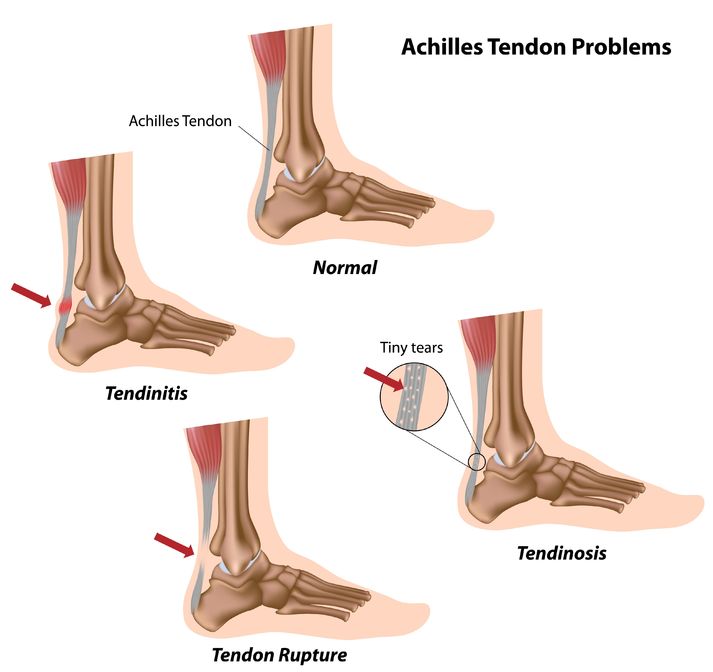
What exactly is Achilles Tendinitis anyway?
When the Achilles tendons become inflamed, it's called Achilles tendinitis. The condition leads to sharp, stabbing pain in your lower leg just below the heel, near the top of the shoe.
As the biggest tendons in the body, the tendon can tolerate a lot, but if overused, it can become prone to injury or tendonitis, says rebound ankle and foot specialist, Dr. David Pugh, R.C. – Director of Rebound Foot and Ankle, Inc., located in Phoenix, AZ.
Achilles tendinitis is caused by improper exercise or over-exercise, or both, which cause the tendons to stretch too far. When they're stretched too far, the tendons become weak and will begin to tear. This causes the pain.
Heel spurs are one of the most common injuries associated with tendons. Common causes include wearing tight shoes, poor lifting, improper walking posture and not taking care of your feet.
For the most part, Achilles tendinitis doesn't cause you much pain. It is, however, an extremely painful condition, especially when standing or walking. You may find that the pain starts to disappear after a few days or weeks, but the longer you keep going the pain worsens.
If the pain is unbearable, you should see a doctor right away. It's a painful and potentially dangerous type of tendonitis that can result in a herniated disk, a condition that can severely restrict your movement, leading to more pain. If left untreated, it can also lead to the rupture of your disk or even a spinal cord injury, causing permanent damage to your spine.
A great way to help alleviate Achilles tendinitis is through exercise and good foot care. Make sure that you have the proper footwear for walking: shoes that fit properly, aren't too tight, don't rub on the bottom of your feet.

Plantar fasciitis is another very painful condition that can cause severe pain
If you're experiencing this pain in your heels and/or heels area, go to your doctor immediately, as this is not something you can ignore.
Plantar fasciitis is caused by strain on the plantar fascia, which is a long stretch of fibers that runs from your heel bone to the ball of your foot. Your body's natural response to pain or injury is to tighten up these muscles. But if they're already tight, the body cannot repair them properly, resulting in a more serious problem. This can happen in several different ways, such as excessive twisting of the ankle, wearing improperly fitting shoes or being overweight.
The plantar fascia stretches between your heel bone and the ball of your foot and keeps the tendons together. If these fibers become strained, you could experience pain and instability.
To relieve the pain associated with plantar fasciitis, you can try a variety of stretching exercises that target the area. Yoga stretches for the calf muscles are one way, as well as ankle wraps. If you wear poorly fitting shoes, you can get some relief by wearing a strap designed to break the laces and let the tendons slide back and forth freely.
A stretching routine may be all that it takes to keep the pain from occurring. And there are plenty of other things that you can do for pain relief. Swimming, walking or running can help to increase blood flow to your tendons, which will reduce pain.
Achilles tendinitis can be very frustrating and you may have to suffer for quite some time before you see any relief. Don't forget that you should also take care of your feet! By keeping them clean and well cared for, you'll get the most out of your treatment.
Achilles tendinitis isn't a life threatening condition, but it can be miserable and painful. Be sure to take care of your feet, as the last thing you need is for this pain to cause you additional pain.

